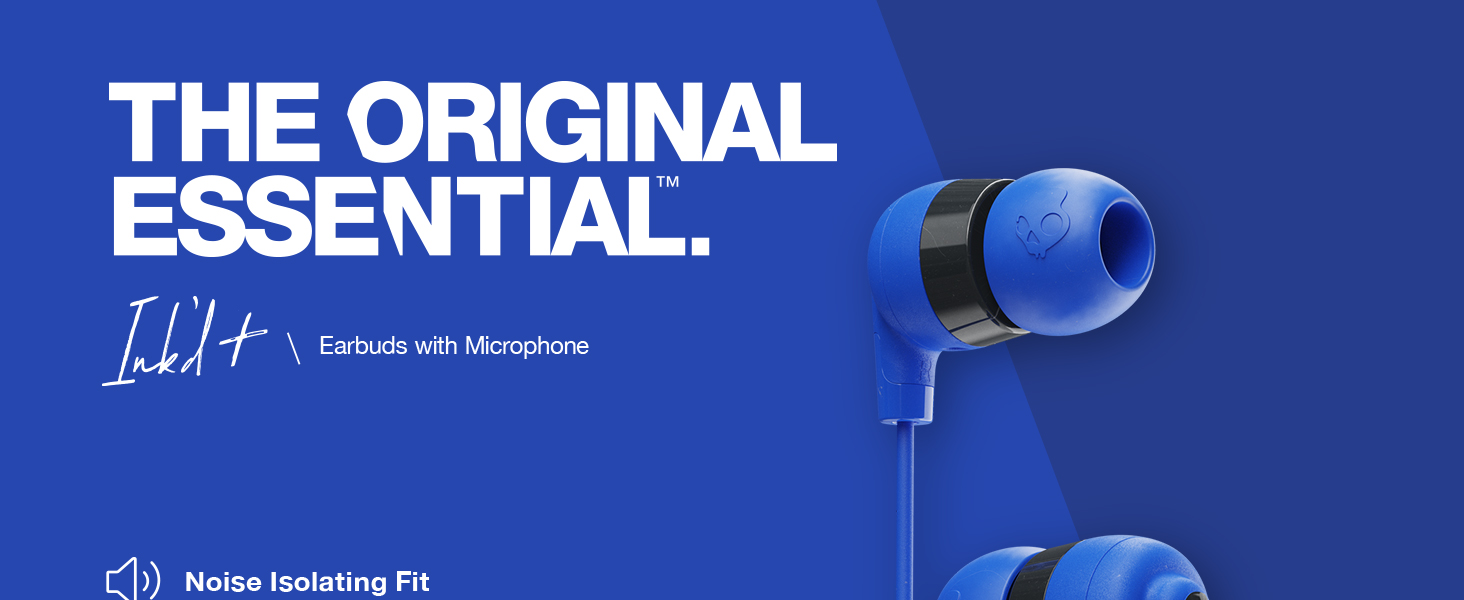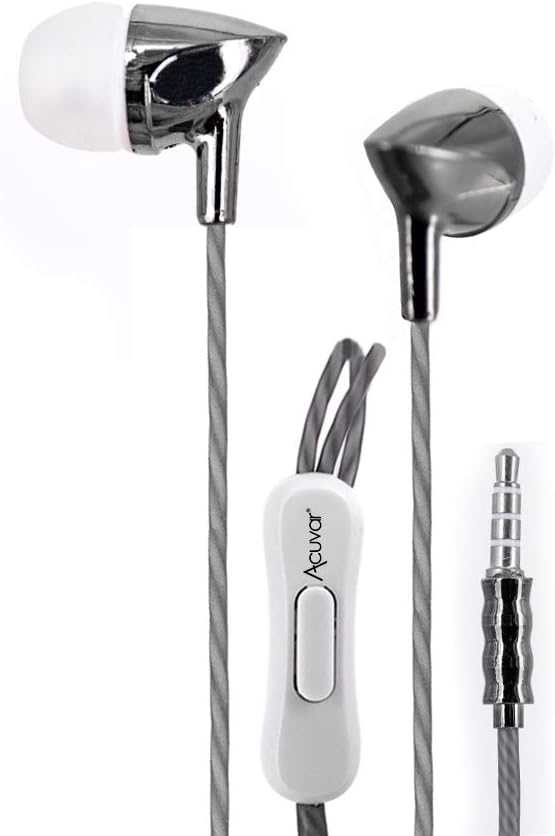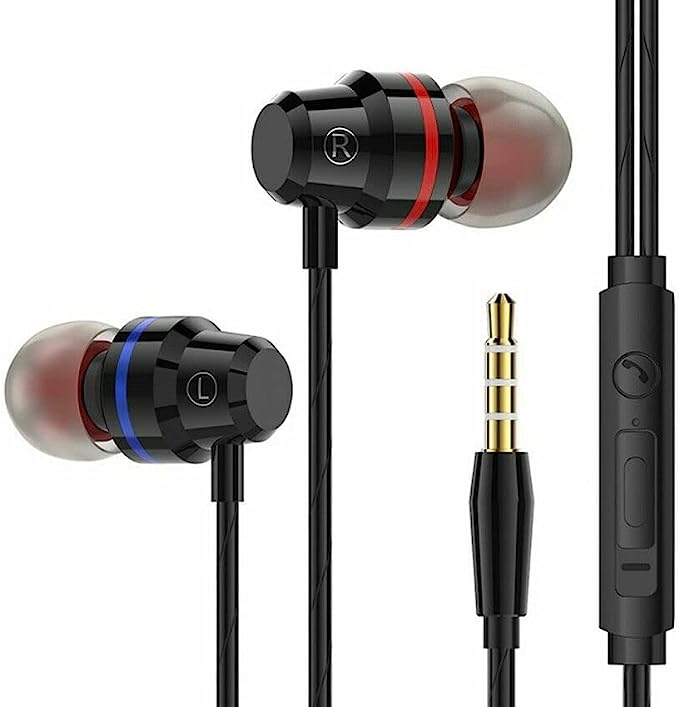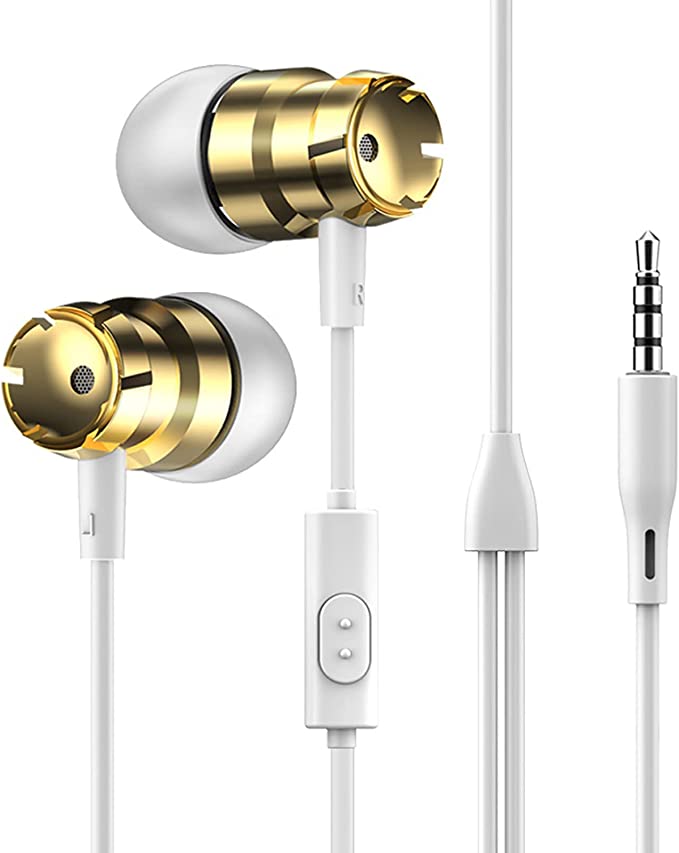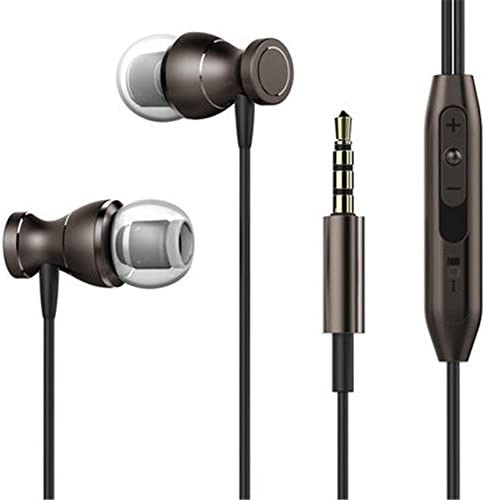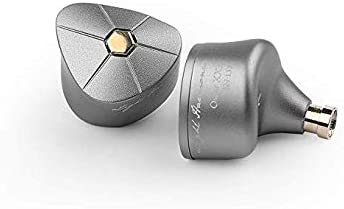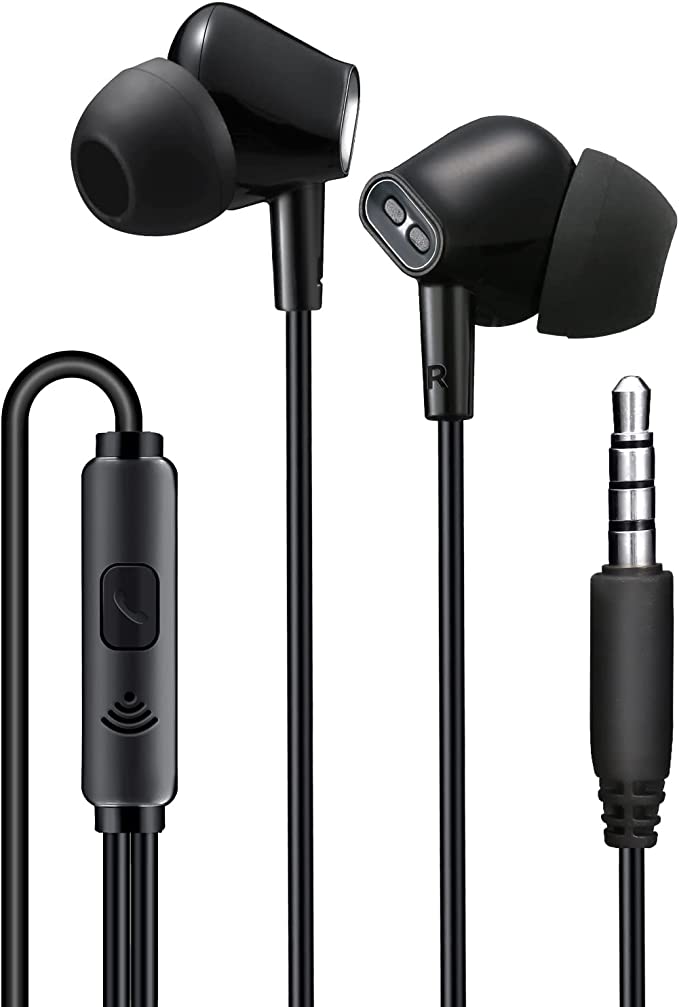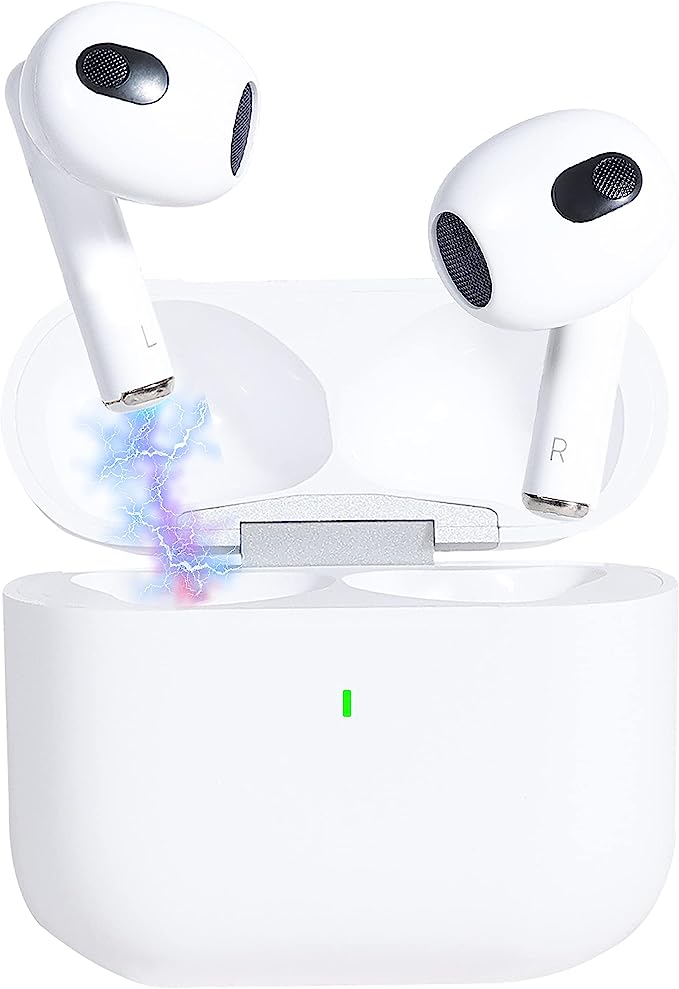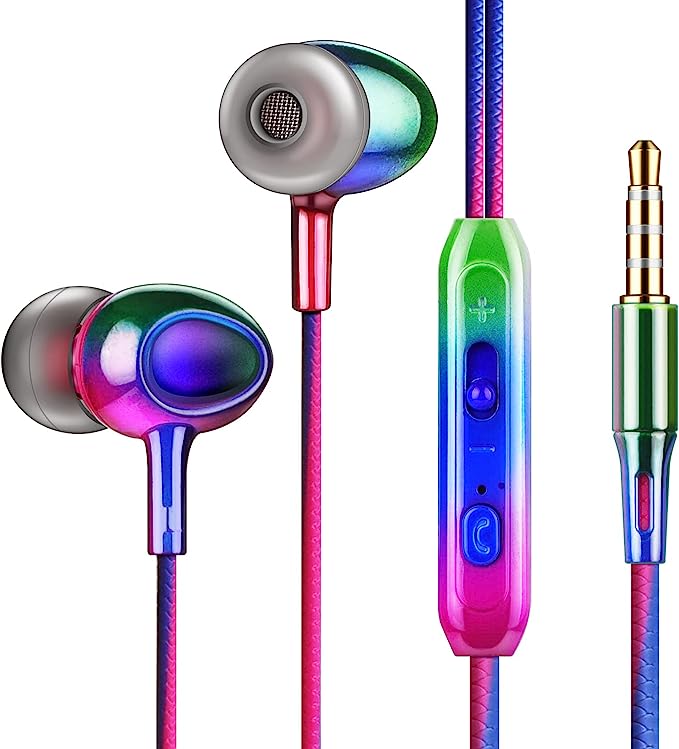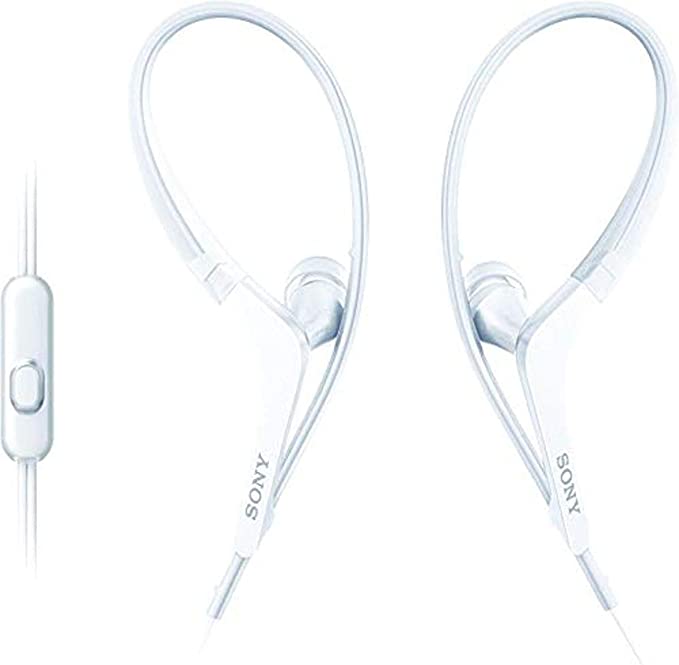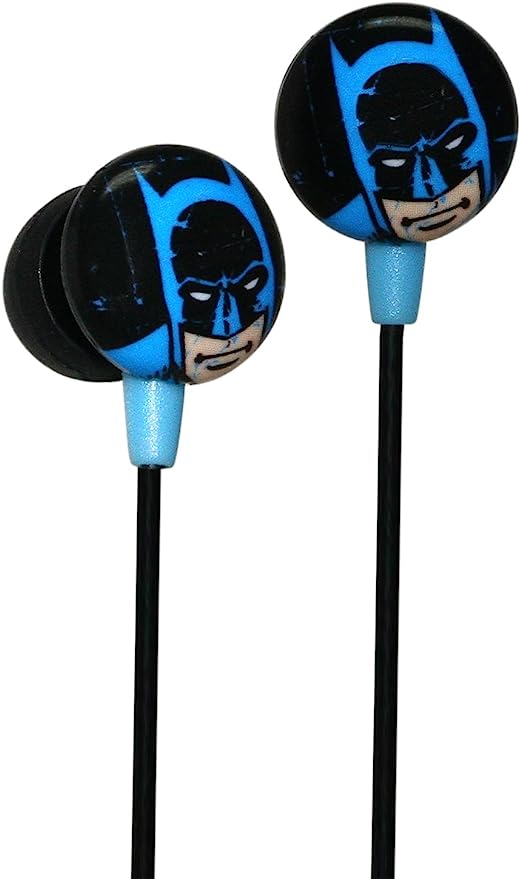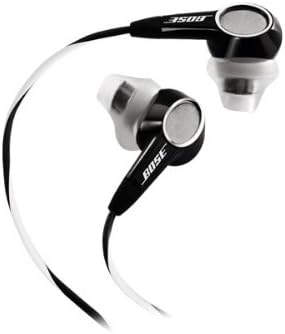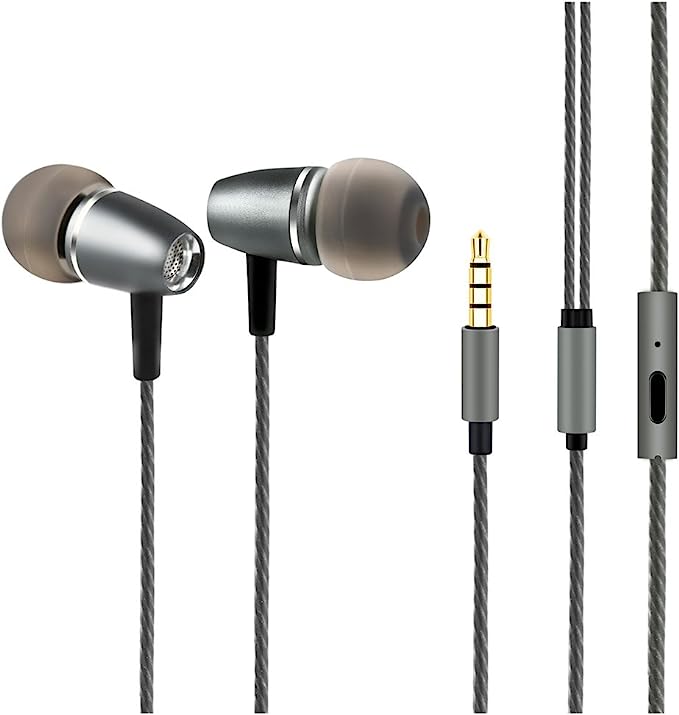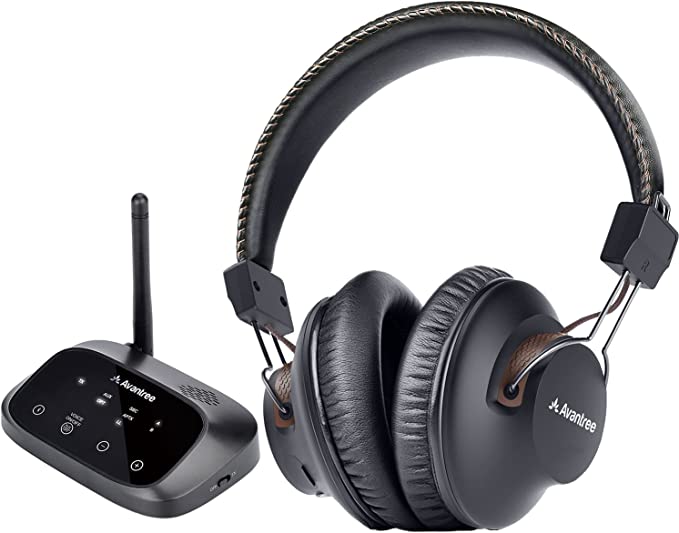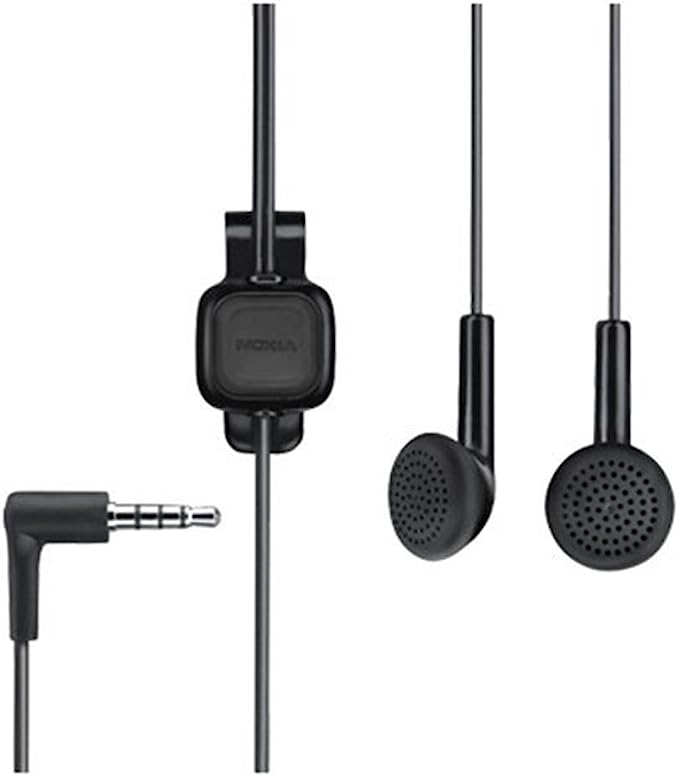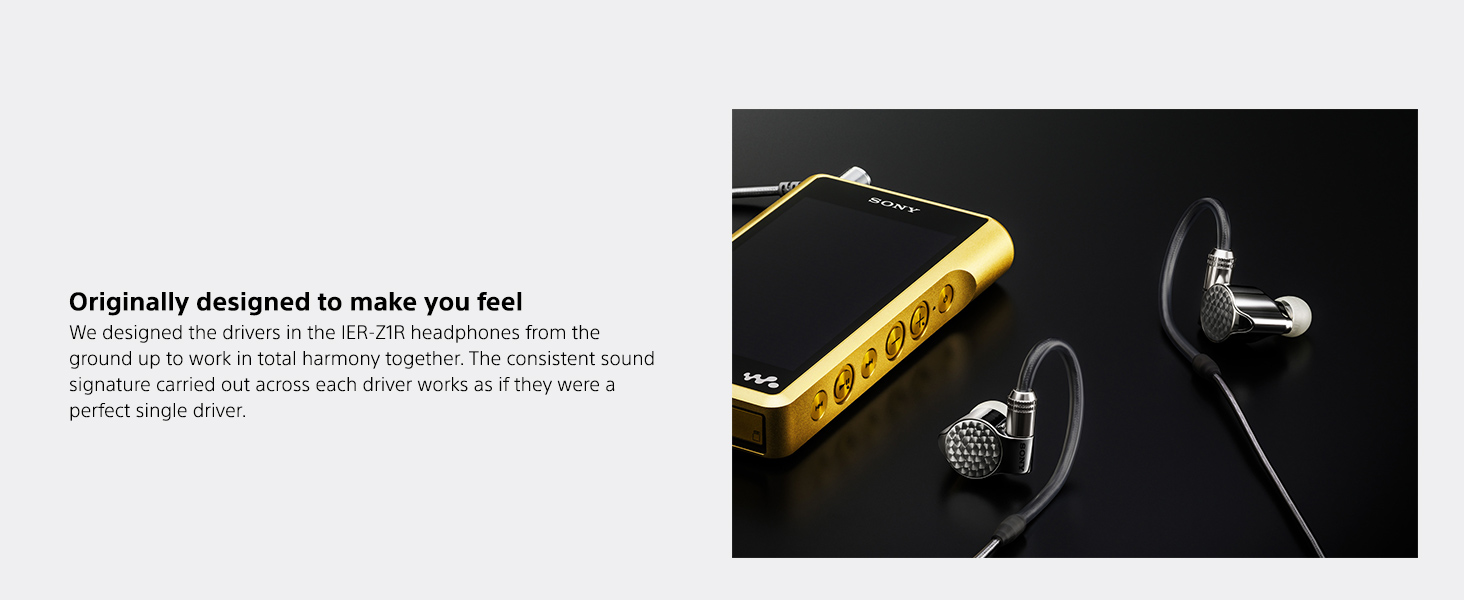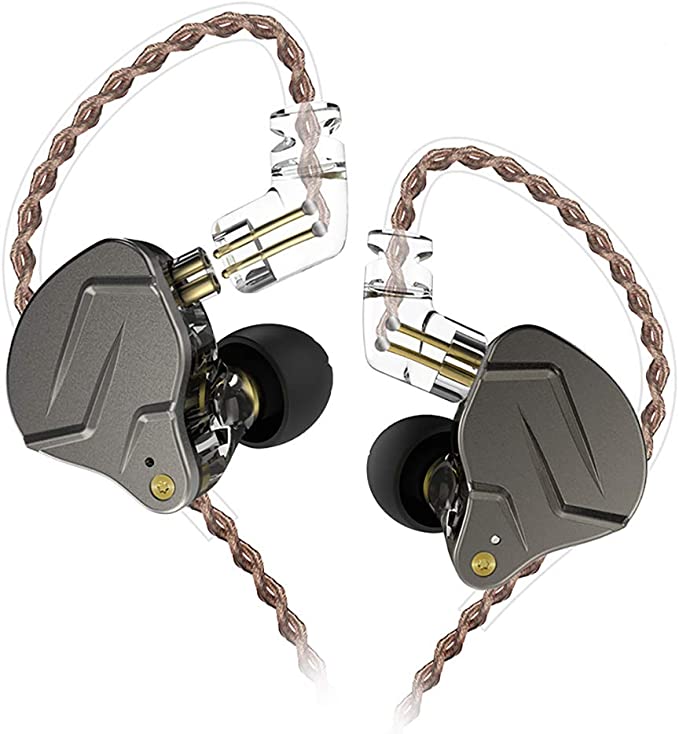RCA HP57N EarBuds (Silver): Understanding Your Audio Basics for Clear Sound
Update on May 14, 2025, 3:05 p.m.
We often reach for them without a second thought – a pair of unassuming earbuds, our personal portal to podcasts that unravel mysteries, music that moves our feet, or the voice of a loved one bridging the miles. They are the ubiquitous audio companions of our modern lives. Among these everyday workhorses are products like the RCA HP57N EarBuds (Silver), perhaps not gracing the covers of high-fidelity magazines, but representing a category of accessible technology that millions rely on. But what if we paused and looked closer? What if we peeled back the layers of this seemingly simple device? We’d find a fascinating confluence of physics, material science, and ergonomic consideration, all working in concert to deliver sound to our ears. This journey isn’t just about one pair of earbuds; it’s about discovering the often-overlooked science that underpins even the most basic technology we use. What secrets, then, do a gleaming gold-plated jack, soft foam tips, and a feather-light design truly hold?

The Portal to Your Playlist: Understanding the In-Ear Experience
Before we delve into specific features, let’s consider the fundamental way these earbuds interact with us. The RCA HP57N are designated as “In Ear” headphones. This isn’t merely a stylistic choice; it’s a functional one. By sitting directly within the concha or extending slightly into the ear canal, this design aims to channel sound more directly towards the eardrum. This intimate placement can create a more immediate and, for some, immersive listening experience compared to headphones that sit over or on the ear. It also, by its very nature, offers a degree of passive noise isolation – the physical barrier of the earbud itself helping to slightly dampen the cacophony of the outside world, allowing you to focus more on your chosen audio.
At the heart of any earbud, including this RCA model, lies a miniaturized marvel: the driver. Think of it as a tiny loudspeaker, a transducer whose sole mission is to convert electrical signals from your audio device into the mechanical vibrations we perceive as sound. While the specific internal components of the HP57N’s drivers aren’t detailed in the provided information, the general principle involves a diaphragm (a thin, flexible membrane), a voice coil (a finely wound coil of wire attached to the diaphragm), and a magnet. When the electrical audio signal flows through the voice coil, it creates a fluctuating magnetic field that interacts with the permanent magnet. This interaction forces the voice coil, and thus the diaphragm, to vibrate rapidly. These vibrations meticulously push and pull the air, creating pressure waves – sound waves – that travel into your ear. The engineering challenge, met daily in millions of such devices, is to perform this delicate dance accurately and efficiently within an astonishingly small enclosure.
The Enduring Shine: Deconstructing the 3.5mm Gold-Plated Jack
One of the highlighted features of the RCA HP57N EarBuds is their “3.5mm gold plated jack for clear sound reproduction.” This humble connector, often called a mini-jack or headphone jack, is an unsung hero of the audio world. First introduced in the mid-20th century (evolving from earlier, larger phone connectors used in switchboards), the 3.5mm jack rapidly became a near-universal standard for portable audio, prized for its simplicity, reasonable durability, and compact size. It has connected generations to their music, from Walkmans to smartphones.
But why the emphasis on “gold plated”? This isn’t merely for a touch of visual luxury. The science here is rooted in gold’s remarkable chemical properties. Gold (Aurum, symbol Au) is a noble metal, meaning it’s exceptionally resistant to corrosion and oxidation. Unlike metals such as copper, brass, or even nickel, gold doesn’t readily react with oxygen, moisture, or common atmospheric pollutants. Think about an old copper penny turning dull green, or silver tarnishing to black – these are forms of corrosion. On an audio connector, even a microscopic layer of oxidation or tarnish can act as an unwanted insulator or create an uneven surface for electrical contact. This can lead to a host of audio gremlins: increased electrical resistance (which can muffle sound), intermittent signal (crackles and pops), or even non-linear distortions. The claim of “clear sound reproduction” is thus directly linked to gold’s ability to maintain a pristine, highly conductive pathway for the delicate audio signals, year after year. Imagine it like a perfectly clean water pipe allowing water to flow smoothly, versus a rusty, constricted pipe that hinders the flow and introduces impurities. The gold plating acts as a durable shield, ensuring that the electrical “audio stream” remains as pure as possible from your device to the earbuds themselves. While the layer of gold is typically very thin, its chemical inertness is key to long-term signal integrity, a factor that might contribute to the longevity some users, like Kristen Sarno who reported her pair lasting “2 to 3 years,” experience. This is particularly relevant for a connector that is frequently plugged and unplugged.
The Weight of Sound (Or Lack Thereof): Exploring Lightweight Design and Comfort
The specifications for the RCA HP57N EarBuds list an item weight of a mere 19.87 grams. This might seem like a trivial detail, but in the realm of wearable technology, especially devices that sit in or on our sensitive ears, “Lightweight and compact” is a significant ergonomic feature. What does this feather-light design mean for your listening experience?
The science of ergonomics, particularly as it applies to headphones, is deeply concerned with pressure distribution and minimizing strain. Even a few extra grams, if poorly distributed or concentrated on a small area of the ear’s cartilage (the pinna or concha), can lead to discomfort, soreness, or even headaches over extended periods. Think of the difference between carrying a heavy backpack with poorly designed straps versus one that’s light and distributes its load evenly. The nearly 20-gram weight of these earbuds is designed to minimize this “drag” or pressure. This allows for more comfortable long-duration wear, whether you’re engrossed in an audiobook during a long commute, focusing on a lecture recording for hours, or simply enjoying a lengthy playlist while relaxing. The goal is for the earbuds to become almost unnoticeable, an extension of your listening rather than a physical burden.
Achieving such a lightweight profile without sacrificing basic structural integrity typically involves careful material selection in the broader world of electronics design. While the specific plastics or alloys used in the HP57N are not detailed in the provided information, consumer electronics commonly utilize various grades of acrylonitrile butadiene styrene (ABS) plastic, polycarbonate, or other lightweight polymers for casings. These materials offer a good balance of strength, lightness, and ease of molding into complex shapes, contributing to both the low weight and the “compact” nature that makes these earbuds easy to slip into a pocket or bag.
The Soft Frontier: The Science and Sensation of Foam Earbud Covers
Complementing the lightweight design are the “Soft, foam earbud covers” included with the RCA HP57N. These unassuming sleeves of foam play a surprisingly multifaceted role in both comfort and acoustics.
Foam, as a material, is characterized by its porous, cellular structure and its elasticity. This allows the earbud covers to compress and then gently expand to conform to the unique contours of an individual’s ear. This adaptability is key to their comfort, as it helps to distribute the slight pressure of the earbud more evenly, reducing potential pressure points that could arise from a harder, less forgiving material. Think of it like a memory foam pillow for your ears, albeit a much simpler version. This customized fit can be particularly appreciated by those who find standard hard plastic earbuds uncomfortable or ill-fitting.
Beyond mere comfort, this conforming seal provided by the foam can subtly enhance the listening experience. By creating a better seal between the earbud and the ear canal, the foam covers can improve passive noise isolation. This isn’t active noise cancellation, which uses electronics to counteract external sounds, but rather a physical barrier that helps to reduce the intrusion of some ambient noise. This can allow you to listen at lower volumes, which is better for your hearing in the long run, and can make your audio feel more direct and immersive. Acoustically, a better seal can also sometimes improve the perceived bass response, as less sound energy (especially lower frequencies) escapes outwards.
However, the practical nature of foam covers also brings considerations. As user “Robbo” from the provided reviews noted, “The little foam covers fall off all the time,” which can be a common frustration with this style if the fit to the earbud nozzle isn’t perfectly snug or if they degrade over time. Foam is also porous, meaning it can accumulate earwax and debris, so hygiene (occasional cleaning or replacement, if possible) is a general consideration for any foam-tipped earbud for optimal performance and ear health.
Cracking the Code of Clarity: Frequency Response and Real-World Sound
The product information for the RCA HP57N states a “Frequency Response: 20000 Hz.” To understand this, we need to touch upon the basics of how we hear. Sound is made of vibrations, and the rate of these vibrations is called frequency, measured in Hertz (Hz). Low frequencies correspond to deep bass rumbles, while high frequencies create sharp, shimmering sounds like cymbals or birdsong. The generally accepted range of human hearing spans from about 20 Hz on the low end to 20,000 Hz (or 20 kHz) on the high end, though this upper limit tends to decrease with age.
Stating an upper frequency response limit of “20000 Hz” for the RCA HP57N indicates that the earbuds are designed to reproduce sounds up to the higher threshold of typical human hearing. This capability is important for rendering the crispness in percussion, the subtle harmonics in string instruments, and the overall sense of “air” or “brightness” in a musical piece. It’s these higher frequencies that often contribute to the perceived clarity and detail in audio.
However, a single upper-frequency value tells only part of the story. A full frequency response specification would typically show a graph indicating how evenly the earbuds reproduce all frequencies across the spectrum. The claim of “clear sound reproduction” by the manufacturer is an aspiration, but real-world sound quality is incredibly subjective and influenced by many factors beyond just this one metric. The driver’s overall design and quality (which are not detailed for this specific product), the materials used in the diaphragm, the acoustic chamber design of the earbud housing, the quality of the source audio file, and even the unique shape of an individual’s ear canal all play significant roles. This complexity is reflected in the mixed user reviews for the HP57N: some find the sound “good” (Robbo, Larry Culbertson), while others describe it as “not the best” (Kristen Sarno) or even “Terrible sound quality…Very muddy…dialog was muddled” (Martin Saxer). This variance is common, especially with budget-friendly audio equipment where compromises in component quality or acoustic tuning might be made to achieve an accessible price point. For many, especially those seeking straightforward audio for podcasts or casual listening, the HP57N might be perfectly adequate, while those with more critical listening habits might find them wanting.
The Humble Wire: Connectivity and the (Occasional) Tangle
The primary connection method for the RCA HP57N EarBuds is, of course, via their wired cable terminating in that 3.5mm jack. The product details amusingly list “Connectivity Technology: RCA.” While RCA is indeed a well-known brand and also the name for a different type_of_phono_connector (those red, white, and yellow plugs familiar from older AV equipment), for these earbuds, the actual audio signal connection technology is simply “wired” via the 3.5mm TRS (Tip-Ring-Sleeve) connector. This direct physical link ensures a latency-free audio signal, which can be crucial for watching videos or playing games where audio-visual sync is important.
The provided information also cryptically mentions “Cable Feature: Retractable.” If this feature is indeed present and functional on the HP57N, it would offer a significant practical benefit. Retractable cables are designed to spool into a housing, minimizing the perennial frustration of tangled wires that plague users of wired headphones. This not only adds convenience for storage and transport but can also potentially extend the life of the cable by protecting it from sharp bends or snagging when not in use – common culprits in cable failure.
However, the durability of wired connections and cables, in general, is often a point of concern for budget electronics. User experiences with the HP57N reflect this dichotomy. Kristen Sarno found her pair “long lasting,” suggesting a robust cable and connection points for her usage. Conversely, Nicole Little reported they “Break easily,” indicating that for other users, perhaps under different conditions or with different handling, the physical integrity of the cable or its connection to the earpieces or jack might be a weak point. This variability is a common narrative in the world of affordable electronics.
Echoes from Users: A Balanced Listen to Feedback
While we dissect the science and design, the true measure of any product lies in the hands (and ears) of its users. The RCA HP57N EarBuds (Silver) hold an average rating of 3.4 out of 5 stars from a small sample of 9 global ratings (according to the provided Amazon data). This mixed response is telling.
Positive notes emerge, such as the appreciation for the classic, no-fuss style mentioned by Gabbi, who bought them for her father who “only likes this style of earbuds.” The previously mentioned longevity experienced by Kristen Sarno also stands out. Some users found the fit agreeable, with ROBERT S. stating they “fit great,” even if the sound “could be better.”
However, as discussed, sound quality is a point of contention. While some found it “good,” Martin Saxer’s experience of “Very muddy sound” and “muddled” dialogue for podcasts highlights a significant drawback for others. The physical aspects also drew mixed comments: the foam covers, while potentially comfortable, were noted by Robbo to “fall off all the time,” and Nicole Little’s report of them breaking on the first day of use by students points to potential fragility under certain conditions. These user echoes provide a crucial counterpoint to manufacturer claims, painting a more complete, albeit sometimes contradictory, picture of what one might expect from these RCA Earbuds. They underscore the subjective nature of audio, the variability in manufacturing or quality control at budget price points, and how different users prioritize different aspects – be it sound fidelity, durability, or simple, familiar comfort.
The Enduring Charm of Uncomplicated Tech
In an era of ever-accelerating technological complexity, where features are piled upon features, there’s a certain enduring charm to a product like the RCA HP57N EarBuds. They represent a category of technology that aims to do a fundamental job – deliver personal audio – in a straightforward manner. As we’ve seen, even behind this apparent simplicity lies a wealth of intentional design choices and scientific principles: the chemical steadfastness of gold ensuring a clear electrical path, the ergonomic considerations of a lightweight form, the material properties of foam enhancing comfort, and the basic physics of converting electricity into the sound waves that color our world.
Understanding these underlying principles does more than just satisfy intellectual curiosity. It empowers us as consumers, allowing us to look beyond marketing jargon and appreciate the tangible benefits (or potential trade-offs) of different features. It fosters an appreciation for the decades of scientific and engineering refinement that have made such accessible audio technology possible.
The RCA HP57N EarBuds, with their mixed feedback and basic feature set, may not be the pinnacle of audio engineering. Yet, they serve as a perfect reminder that even the most common, everyday objects are often more than meets the eye (or ear). They are a testament to the quiet ingenuity that solves everyday problems, offering a functional, if sometimes imperfect, solution for those seeking simple, understandable, and affordable personal audio. Perhaps their greatest value lies not just in the sound they reproduce, but in the opportunity they offer us to pause, inquire, and appreciate the science woven into the fabric of our daily lives.
